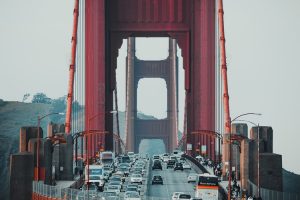The term ‚Äúsmart city‚ÄĚ is ubiquitous, but what does it really mean for our planet? All over the world, our cities are consuming increasing amounts of natural resources while generating more waste and emissions. This leads to all kinds of pollution, and the consequences are being felt on a planetary level.
A city can only truly be smart when it solves the most pressing needs of its populace, increases their life quotient,  and in tandem eases the environmental pressure on our planet.

What does this mean?
It means that by using advanced technology like IoT, we can start shaping and evolving cities to be better equipped at addressing urban challenges that can have a negative impact on the environment and its people.
The convergence of technology and innovation creates an opportunity to fully realize the city as a platform to co-develop solutions across the city.
Smart city solutions have the opportunity to improve environmental quality and safety, promote economic development and equity, and enhance people’s standard of living. Each day there are new advances in real-time technology and design for transportation, water, energy, communications and other city-serving systems.
The specific areas where smart city systems can help with this objective are a bit varied and few of them are still nascent. However, if utilized well, can go solve major problems. One of the biggest element of focus for a smart city is traffic management.

Advanced traffic management systems
Traffic is a significant contributor to global warming through emission of carbon dioxide. The way smart cities can contribute to reduce carbon footprints is by incorporating different alternatives for transportation so that people don’t depend as heavily on privately-owned cars for mobility.
Travel time reduction is a key goal that Smart Cities have been studying closely. By quantifying the benefits of the traffic solution to¬† ‚Äėcongestion costs‚Äô, cities can understand where to invest their money for the biggest benefit. By applying further citizen information and introducing greater public awareness, predictable and refactored efficiencies can be distinguished to drive better public traffic management.
Investing in faster and well-connected trains, smart bike-sharing services (where bikes all over the city can be unlocked via apps on the phones), and implementing unmanned traffic management (UTM) systems are all great ways to put emerging technology to good use.
For example, San Francisco focuses its smart city plan mostly on transportation by implementing technology that looks to make public transportation more affordable, accessible and streamlined. It has future plans to connect more of its services through expansive IoT networks, sensors and connected devices.  As each system reaches maturity through aggregating a strong baseline, it is then looked to correspond with new systems to drive even further data creation. Implementing energy-efficient IoT systems like GPS, traffic flow detection cameras, and traffic light coordination systems to regulate traffic are a great way for smart cities to save energy.

The data collected by a smart city can be used to maximize the entire grid, understand traffic patterns, and inform infrastructure needs. Data collected from thousands of sensors will give a better understanding of a city’s overall traffic habits. Data will come from traffic management centers, weather sensors, emergency responders like Police, universities, and sensors on buses, rail, roads and signals.
Information from Electric Vehicles (EVs) can be used to maximize an entire utility grid, understand traffic and charging patterns, and inform future infrastructure needs.
Fortunately, electric vehicles reduce air pollution and greenhouse gas emissions. We need to examine the potential for electric vehicle charging corridors throughout the city that ensure all communities, including low-income and multi-family housing, have access to charging infrastructure. The city can work with local start-ups to create a citywide, real-time, hyper-local air quality monitoring system that will empower communities, families, and schools to protect children’s respiratory health.

As rightly pointed out by a Senior Govt. Official ‚ÄúWithout local air quality data paired with increased awareness and advocacy, children and their families will continue to develop chronic lung disease, miss school and work, struggle with increased healthcare costs, and experience decreased income-earning and career opportunities.”
Connected Mobility integrates technology with the preexisting infrastructure to improve safety and to provide flexible, affordable and accessible multi-modal options for everyone.
Smart technologies like road sensors, DSRC, and connected vehicles hold the opportunity to safely fit more people into a finite transportation system. A Smart City’s connected systems should include four values to ensure flexibility and choice in this emerging industry: keeping local control of data, focusing on open source/open software, implementing based on Federal standards, and developing inter-operability. The current need is for a push toward connected vehicles and advanced infrastructure technology, which will ultimately improve congestion, air quality, and safety for residents and businesses.
The need is to provide convenient and centralized access to multiple transportation options and information throughout the city. Mobility freedom connects communities and neighborhoods with safe and convenient access to education, healthy food, entertainment, housing, and jobs.
The key is to establish links between vehicles on the road (utilizing their existing on-board equipment) and roadside infrastructure (traffic signals) that will feed information into a city Enterprise Data Management (EDM) system and the traffic management center, thereby informing the development of policies and programs that help protect individuals.
The future is here
With more than half of the population living in cities, and the urban population expected to grow by another 2.5 billion in the next 30 years, cities will have to heavily invest in the infrastructure and systems needed for a more connected urban development and environmental sustainability. Residents should be able to receive immediate and complete access to city services in a manner that is mobile, affordable and environmentally sustainable.
The use cases and challenges will be different from one city to another. So, of course, the solutions will vary but the underlying core is the same.
And one thing is for sure – a healthy environment leads to healthier, happier life for everyone living in it.


